How To Report Software Bugs in Debian Using Reportbug
Hello, Linux fellas. Today I was trying to install typecatcher on Debian 8 Jessie. I installed it, but it wouldn’t start. Now matter how many times I tried, it just refused to start. So I thought I need to report this bug to Debian. Here’s how to report software bugs in Debian using reportbug.
Report Software Bugs in Debian Using Reportbug
Debian comes installed with a bug reporting tool called reportbug. But it lacks GUI support, so we have to install a package to enable GUI supoort.
apt-get install python-vte
Now you can start using reportbug in GUI mode.
On first run, there’s a wizard guiding you through the bug reporting process step by step. Click Continue.
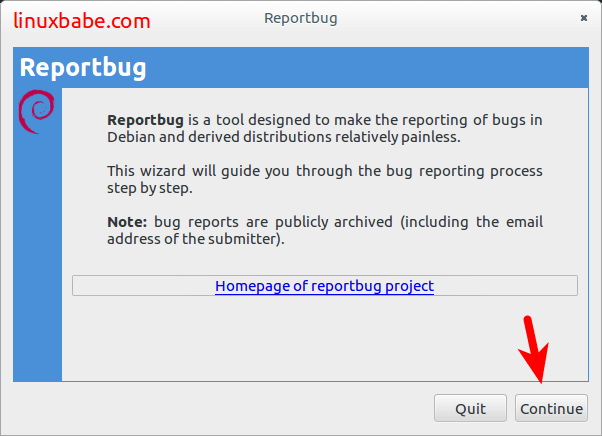
The second window tells you that your settings will be saved in .reportbugrc file under your home directory and you can always edit this file later on to change your settings. Click Continue again.
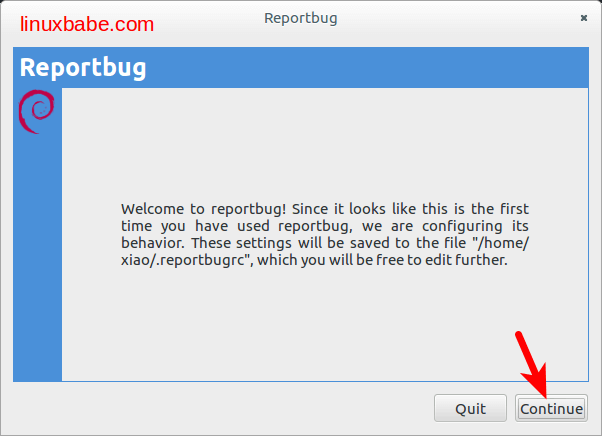
Next it asks you to configure how you want to use this tool. There’re 4 operating mode for reportbug.
- novice
- standard
- advanced
- expert
For this tutorial, I choose advanced. Don’t be frightened by their fancy names. It’s actually easier than you think.
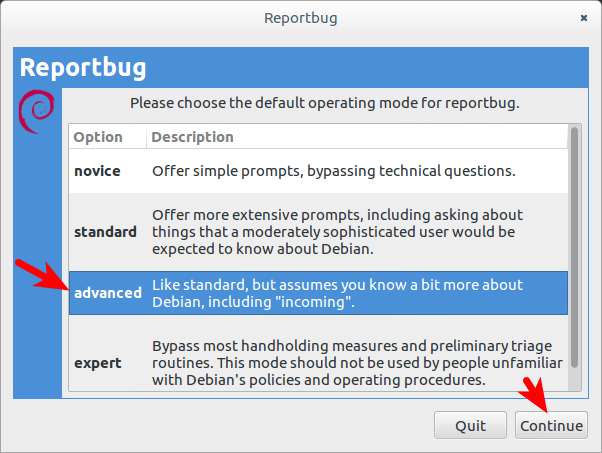
Then it asks you a question: Will reportbug often have direct Internet access? My computer always have Internet access, so I choose Yes.
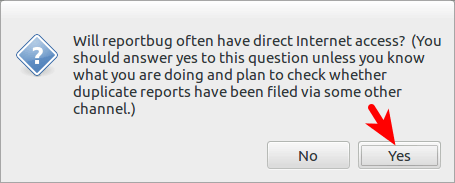
Next, enter your real name.

Enter your email address.

After that, it asks you if you have a MTA configured on your computer. I don’t have a MTA on my computer so I answer No. Most people don’t have MTA configured on their computer.
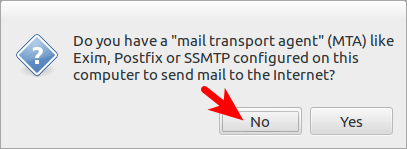
The next window asks you to enter the address of your SMTP host. You can also leave this field blank, your bug reporting email will be relayed through a Debian email relay server.
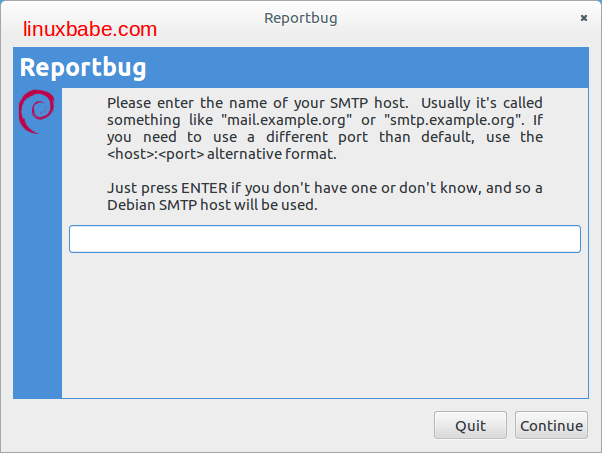
After that, enter your username on the SMTP host.
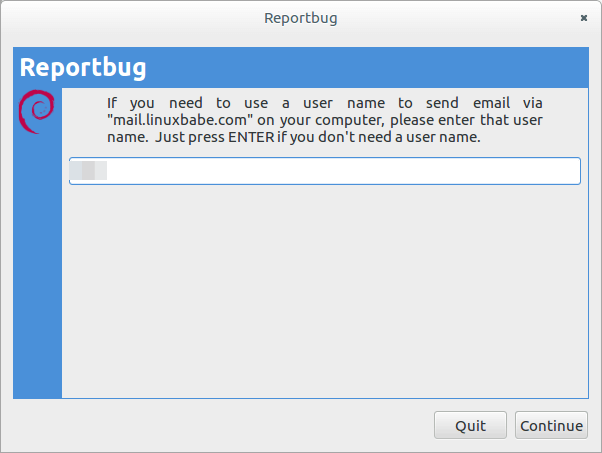
Next it asks you if you want to encrypt your email. I want to encrypt my email so I choose Yes and you should encrypt your email as well.
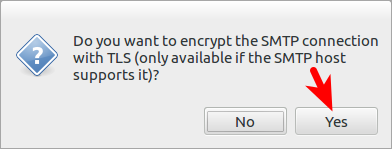
Next it asks you to enter a proxy server for sending email. I do not use proxy server to send email so I press Enter to skip this step.
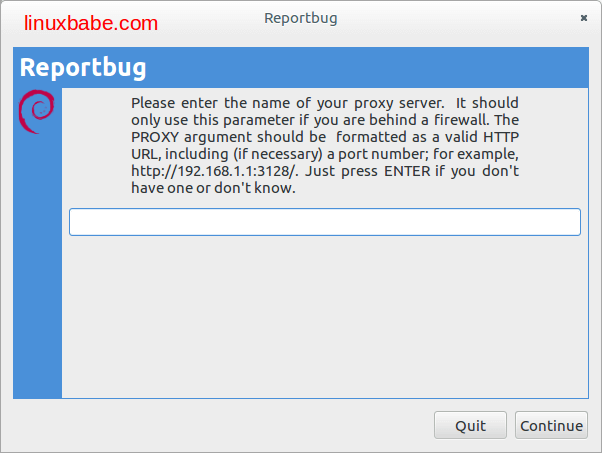
And now the configuration is completed.
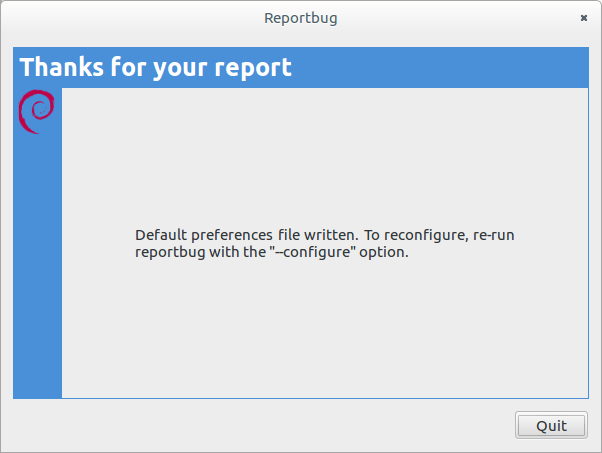
Click Quit button to quit configuration.
Now fire up reportbug GUI again.
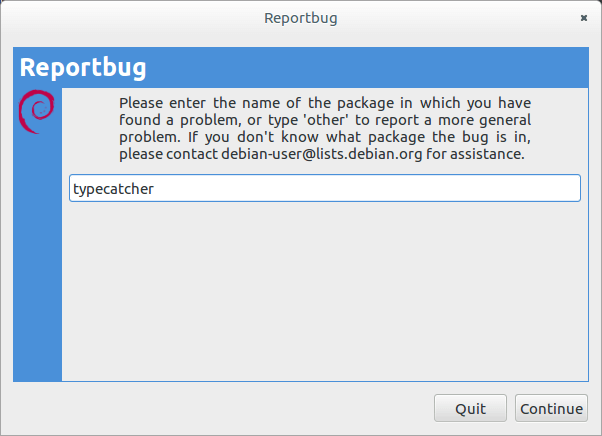
Enter the name of the package in which you have found a problem.
It will check the version of the package installed on your system and to see if there’re new versions available.

It says there’s new version available on Debian stretch and Debian unstable, do you still want to file a report. Because I’m using Debian 8 Jessie, so I choose Yes. I still want to file a report.
Next it checks if there’re exisiting bug reports for the package. In my case there’s no one report a bug against typecatcher before. So now I need to briefly describe the problem. If others have reported the same bug before, you can see in Reportbug and you don’t have to report it again.
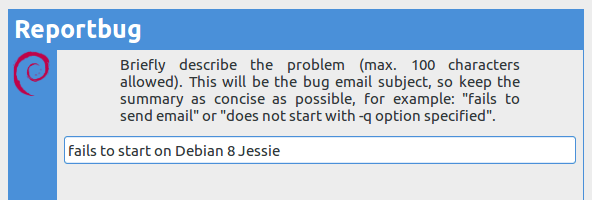
In the next window, you can choose to send this bug report to your email address. So you can see for yourself how your bug reporting email looks like.
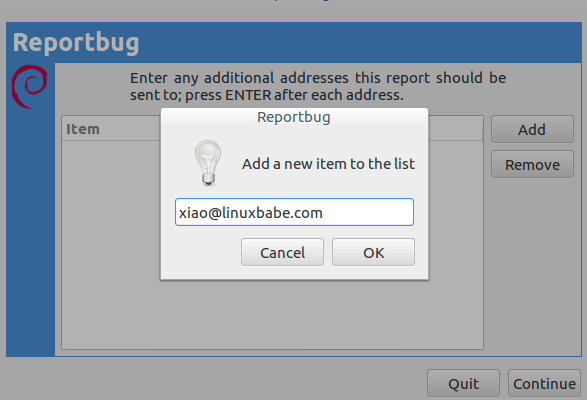
Next it asks you to rate the severity of your problem. I choose Important because the package fails to start and it has a major effect on the usability of the package.
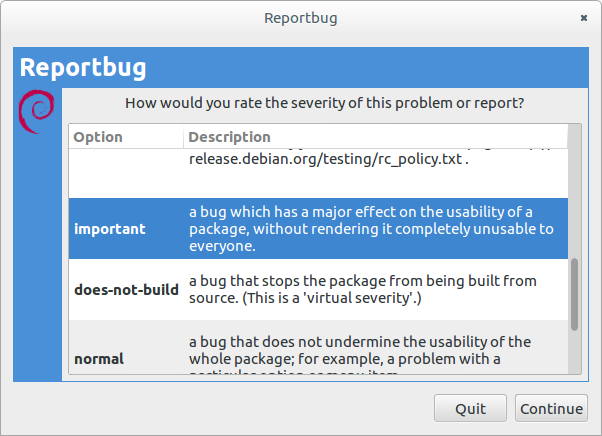
Next, check if these apply to your report. If no item applies to your report, then don’t choose any item.
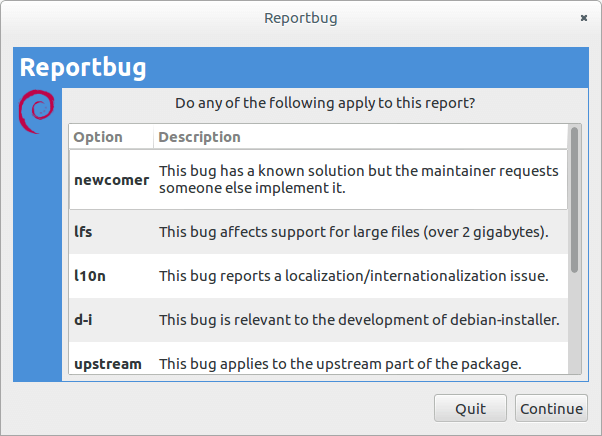
Now write your bug report.
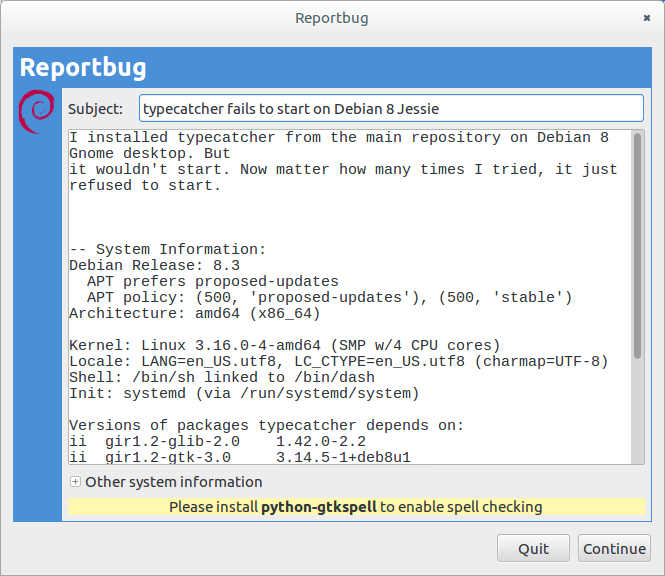
reportbug will automatically detect your system information and insert system info to your bug report. Once you finished writting your bug report, click Continue.
In the next window, you have many options. You can attach a file, re-edit bug report and so on.
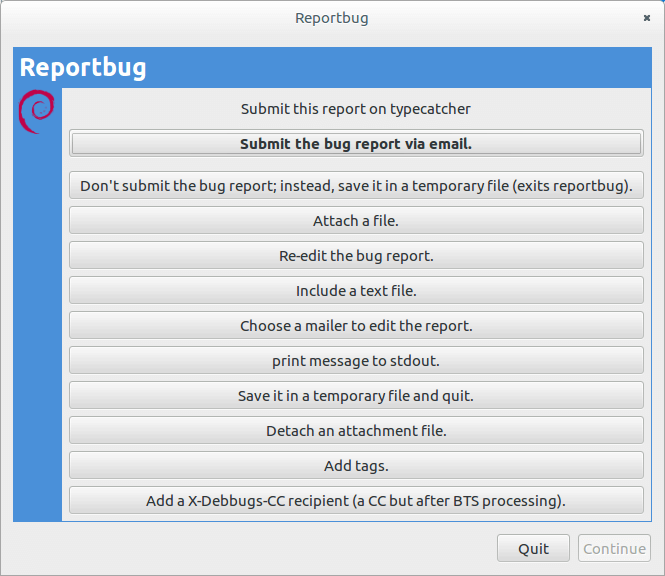
When you are all set, click Submit the bug report via email.
You will need to enter your SMTP password. If you didn’t configured a SMTP host before, you don’t need to enter SMTP password.

Volia! You bug reporting email is sent.
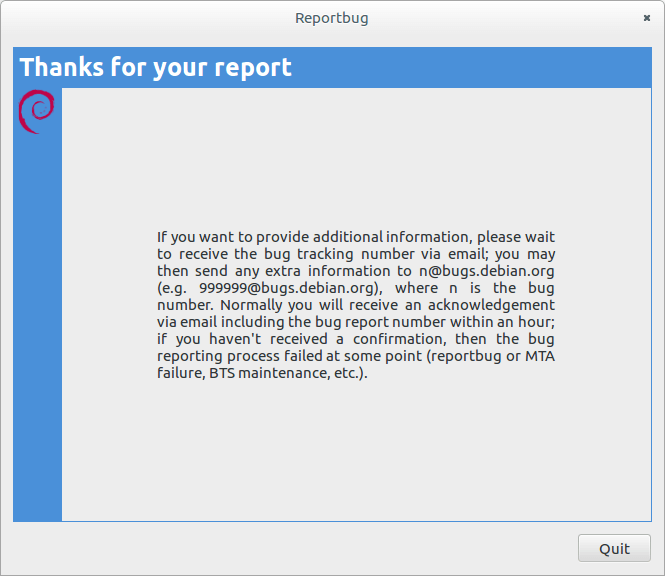
You will receive a confirmation email. You can also check your bug report on Debian bug tracking sytem.


